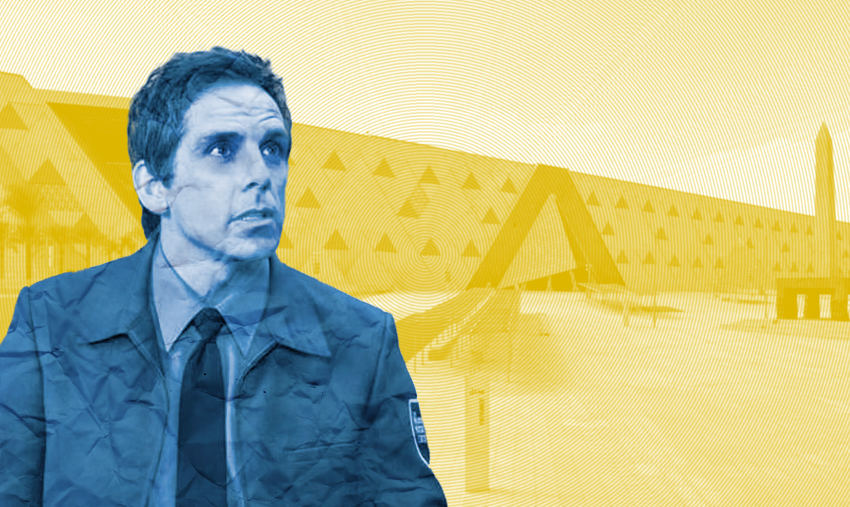Exit through the giftplex
A guided tour through the world’s biggest museums

We’ve already got the biggest tombs–why not make the biggest museum to go with them? So went the logic behind the Grand Egyptian Museum, a 32-year project that will finally open its doors this spring within a couple miles of the Pyramids of Giza, complete with a passageway connecting them.
Dedicated to exploring Egypt’s many archeological treasures, the museum is naturally a quite impressive edifice set on 120 acres of desert land, its angled roofs mirroring the Ancient Wonders beyond them.
Visitors will be wowed by… well, everything, but foremost there’s a massive 36-foot, 83-ton, 3,200-year old statue of Ramses II right in the atrium. Then there are 5,000 artifacts from King Tut’s tomb, the first time ever that they’ll be displayed all together (the tomb was excavated 102 years ago). The 142-foot Khufu ship (or “solar barge”) was buried next to the Great Pyramid back in 2,500 BCE. A grand staircase is lined with statues of pharaohs and relics. The list goes on, almost indefinitely.
So, is it actually the biggest museum in the world? Its own website calls it “one of the world’s largest archaeological museums.” Dezeen magazine says it’s the largest, but an earlier National Geographic interview put the square footage at 484,000–plenty big, but not the biggest.
Let’s put on our comfiest shoes and compare that to the other biggies!
1. The National Museum of China, Beijing (2.066 million sq. ft.)
The National Museum of China used to have a spot further down the list on the biggest museums in the World but upon the merging of the National Museum of Chinese History and the National Museum of the Chinese Revolution under one roof, it is now takes the #1 spot, and it’s not even close. The museum, set in Beijing’s Tiananmen Square, features more than a million items from ancient and modern Chinese cultural heritage, and rare and antiquarian books.
2. The State Hermitage Museum, St. Petersburg, Russia (720,000 sq. ft.)
Showcasing a world’s-largest collection of 3 million items in 365 galleries, the venerable Hermitage is one of the world’s biggest by any measure. Founded by Catherine the Great in 1764, the museum exhibits pieces from the Stone Age to the present day, including many Renaissance and Baroque masterpieces. Of course, you’re unlikely to see it all: Spending a minute per piece, you’d have to visit eight hours a day for 11 years.
3. The Louvre, Paris (652,300 sq. ft.)
Probably the world’s most famous museum, and certainly the most visited (more than 7 million per year), the Louvre offers a lot more than just the tourist-trapping Mona Lisa and Venus de Milo. Its 35,000 other pieces cover nearly 10,000 years of history, starting with a Neolithic statue from Jordan. Oh, and apparently Mary Magdalene is buried beneath it, so that’s neat too!
4. The Metropolitan Museum of Art, New York (633,100 sq. ft.)
USA! USA! The Met’s collection includes more than 2 million pieces of art and artifacts from across the globe. Some of the outsize highlights in the Central Park museum include the Egyptian Temple of Dendur, built shortly before year 0; and the 12-by-21-foot 1851 painting Washington Crosses the Delaware. With nearly 6 million visitors each year, The Met is just behind the Louvre, in second on that list.
5. The Vatican Museums, Vatican City (460,000 sq. ft.)The Grand Egyptian will bump this complex out of the top 5, but it’ll still be #1 in the hearts of a billion-plus Roman Catholics. Founded in 1506, the humbly self-billed “museum of museums” has 54 galleries chock full of historic artworks, collected by centuries’ worth of popes. If that’s not enough for you, the route through the museums will take you through (nbd) the Sistine Chapel.
